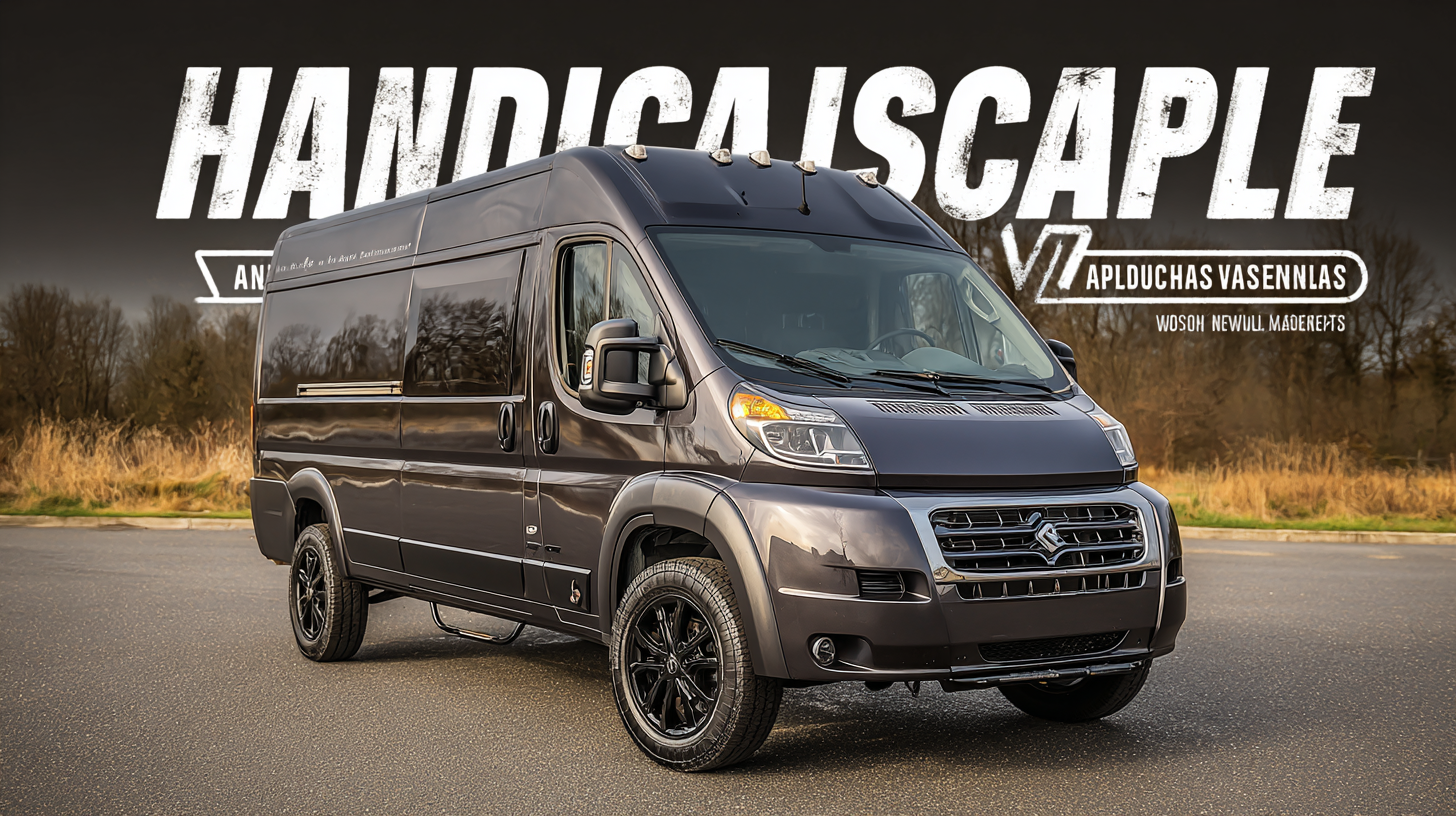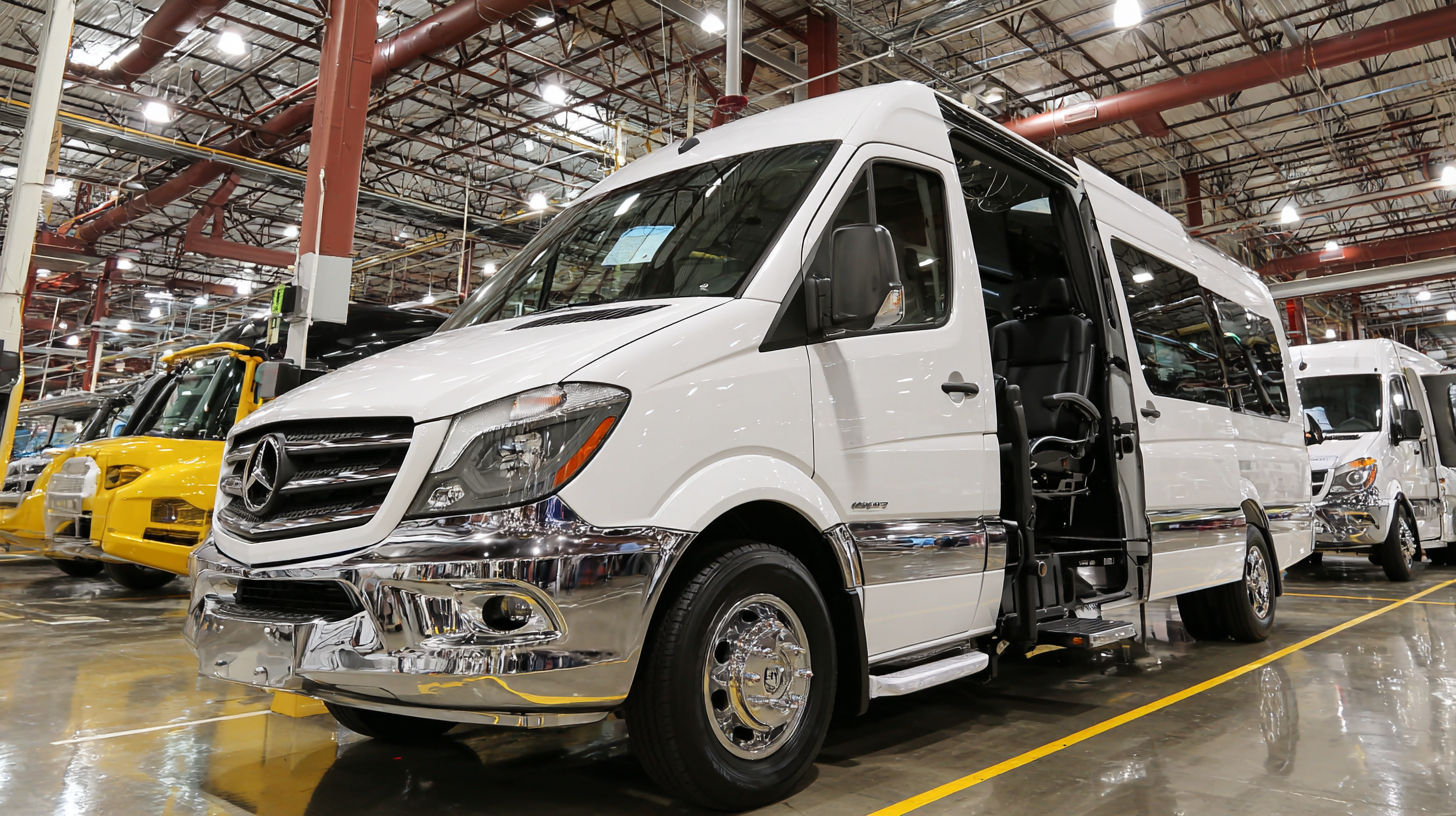Addressing Challenges in Sourcing Best Handicap Accessible Vehicles for Global Markets
The demand for handicap accessible vehicles (HAVs) is on the rise as global markets increasingly prioritize inclusivity and mobility for individuals with disabilities. According to a report by MarketsandMarkets, the global accessible vehicle market is projected to reach USD 13.83 billion by 2026, growing at a CAGR of 5.9%. This surge is driven by various factors, including government mandates for accessibility, an aging population, and advancements in vehicle technology that enhance mobility options.
However, sourcing the best HAVs presents significant challenges, such as varying regulations, diverse market needs, and the need for specialized features tailored to different disabilities. This tutorial will explore strategies to navigate these obstacles, ensuring that consumers worldwide can access reliable and well-designed handicap accessible vehicles that meet their specific requirements.
Identifying Key Features for Handicap Accessible Vehicles in Global Markets
When sourcing the best handicap accessible vehicles for global markets, it is crucial to identify key features that enhance usability and comfort for individuals with mobility challenges. One of the primary considerations should be entry and exit ease, which can be achieved by incorporating features such as low floor designs, wider door openings, and power ramps or lifts. These elements not only facilitate smoother transitions but also promote independence for the users, enabling them to enter and exit the vehicle with minimal assistance.
Another vital aspect is the interior layout and space. Vehicles should provide ample room for wheelchair maneuverability and secure stowage of mobility aids. Adjustable seating and configurations that accommodate different needs can vastly improve the user experience, ensuring that both passengers and drivers have a comfortable and safe journey. Finally, the integration of advanced technology, such as adaptive driving controls and user-friendly infotainment systems, can significantly enhance the overall accessibility and usability of these vehicles. By focusing on these key features, manufacturers can better meet the diverse needs of users in a global market.

Understanding Regulatory Standards for Accessibility Requirements Worldwide
Understanding regulatory standards for accessibility requirements worldwide is critical for ensuring that handicap accessible vehicles are available to all who need them. Different countries have varying regulations that dictate the necessary features and modifications these vehicles must possess to be deemed compliant. For instance, the United States follows the Americans with Disabilities Act (ADA), which mandates specific design standards. Conversely, Europe has the European Accessibility Act that fosters uniformity across member states, yet individual countries can impose additional requirements. Manufacturers must navigate this intricate web of regulations to adopt a global perspective.
In addition, the lack of comprehensive global standards poses significant challenges for automakers aiming to offer vehicles that meet diverse accessibility needs. This variation complicates production processes, leading to increased costs and delays. Stakeholders must advocate for international agreements that align accessibility standards, enabling manufacturers to streamline their operations. By addressing these regulatory challenges collaboratively, we can ensure that people with disabilities have equitable access to vehicles, regardless of their geographical location.
Evaluating Manufacturer Reputation and Quality in Vehicle Sourcing
 When sourcing handicap accessible vehicles for global markets, evaluating manufacturer reputation and quality stands at the forefront of the decision-making process. The growing emphasis on sustainable sourcing and respect for human rights complicates the landscape, as companies must balance their commitment to social responsibility with the need for high-quality vehicles. A manufacturer’s history of ethical practices and ability to provide reliable, durable vehicles is crucial in ensuring that these accessible options meet the diverse needs of users worldwide.
When sourcing handicap accessible vehicles for global markets, evaluating manufacturer reputation and quality stands at the forefront of the decision-making process. The growing emphasis on sustainable sourcing and respect for human rights complicates the landscape, as companies must balance their commitment to social responsibility with the need for high-quality vehicles. A manufacturer’s history of ethical practices and ability to provide reliable, durable vehicles is crucial in ensuring that these accessible options meet the diverse needs of users worldwide.
Furthermore, the rising importance of logistics in supply chain management cannot be overlooked. Efficient procurement and delivery are vital in securing the best handicap accessible vehicles. The integration of advanced logistics services enhances a company's ability to maintain its competitive edge while ensuring that the vehicles sourced are not only functional but also meet stringent safety and quality standards. As manufacturers navigate the complexities of sourcing and production, a critical assessment of their reputation alongside logistical capabilities will ultimately determine the success of providing quality accessible transport solutions in the global market.
Building Relationships with Reliable Suppliers for Consistent Quality
Building strong relationships with reliable suppliers is crucial for sourcing the best handicap accessible vehicles in the global market. As companies strive for increased productivity in 2025, fostering transparent communication and trust with suppliers can significantly enhance operational efficiency. Consistent quality in vehicle production not only meets regulatory requirements but also builds a reputation for reliability among consumers, particularly in underserved markets.
In the dynamic landscape of supply chain management, innovative strategies that prioritize collaboration and mutual benefits between buyers and suppliers are essential. By implementing effective Supplier Relationship Management (SRM) practices, businesses can establish key performance indicators (KPIs) that monitor and optimize supplier contributions. This alignment allows for the identification of inefficiencies and encourages continuous improvement in processes, leading to enhanced performance and customer satisfaction. Ultimately, cultivating these relationships will ensure businesses remain competitive while supporting sustainability goals in their sourcing practices.
Addressing Challenges in Sourcing Best Handicap Accessible Vehicles for Global Markets
| Supplier Location |
Vehicle Type |
Accessibility Features |
Quality Rating (1-5) |
Year Established |
Average Delivery Time (Days) |
| North America |
Minivan |
Ramp Access, Secure Wheelchair Tie-Downs |
4 |
1995 |
30 |
| Europe |
SUV |
Adjustable Seats, Low Step Height |
5 |
2000 |
45 |
| Asia |
Bus |
Wide Aisles, Destination Sign |
3 |
2010 |
60 |
| Australia |
Pickup Truck |
Tow Hitches, Side Steps |
4 |
2015 |
50 |
| Latin America |
Sedan |
Automatic Doors, Navigation |
2 |
2020 |
70 |
Strategies for Cost-Effective Sourcing of Handicap Accessible Vehicles
Sourcing handicap accessible vehicles presents unique challenges in today's global market, but with the right strategies, organizations can achieve cost-effective solutions. One of the most effective approaches is to leverage local partnerships. By collaborating with manufacturers and suppliers in regions where these vehicles are produced, companies can not only reduce shipping costs but also gain insights into local market needs and regulatory requirements. These partnerships can facilitate bulk purchasing agreements, ensuring consistent pricing and availability, which is crucial for meeting demand.
Another strategy involves investing in technology to streamline the sourcing process. Utilizing software platforms that track inventory levels, supplier performance, and pricing trends can help businesses make informed decisions. By analyzing data on vehicle specifications and customer preferences, organizations can better align their sourcing strategies with market trends, ultimately leading to more efficient procurement processes. Moreover, businesses should consider exploring modular designs that allow for easy customization of vehicles, significantly reducing production costs while catering to specific accessibility needs in different markets.
Distribution of Challenges in Sourcing Handicap Accessible Vehicles
